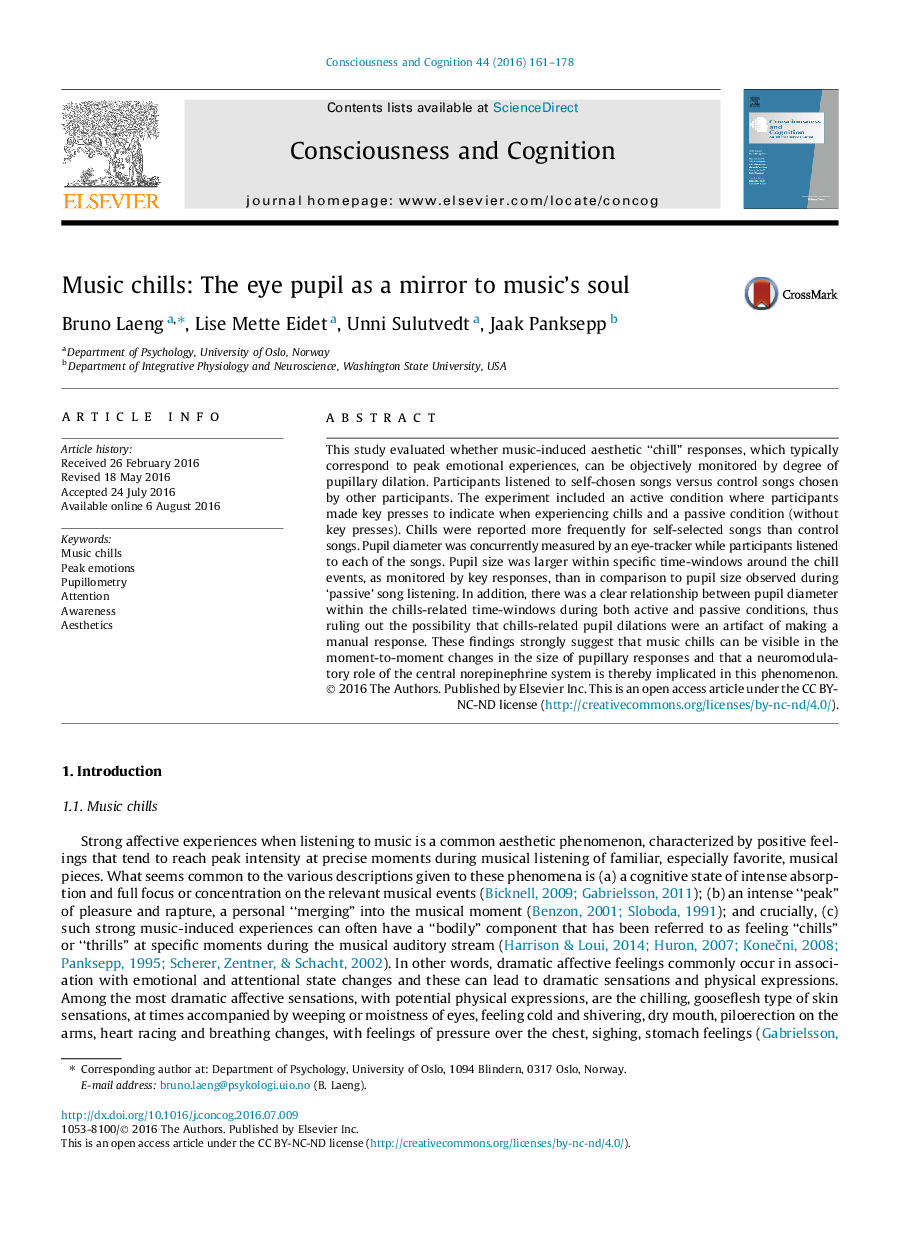| Article ID | Journal | Published Year | Pages | File Type |
|---|---|---|---|---|
| 7288335 | Consciousness and Cognition | 2016 | 18 Pages |
Abstract
This study evaluated whether music-induced aesthetic “chill” responses, which typically correspond to peak emotional experiences, can be objectively monitored by degree of pupillary dilation. Participants listened to self-chosen songs versus control songs chosen by other participants. The experiment included an active condition where participants made key presses to indicate when experiencing chills and a passive condition (without key presses). Chills were reported more frequently for self-selected songs than control songs. Pupil diameter was concurrently measured by an eye-tracker while participants listened to each of the songs. Pupil size was larger within specific time-windows around the chill events, as monitored by key responses, than in comparison to pupil size observed during 'passive' song listening. In addition, there was a clear relationship between pupil diameter within the chills-related time-windows during both active and passive conditions, thus ruling out the possibility that chills-related pupil dilations were an artifact of making a manual response. These findings strongly suggest that music chills can be visible in the moment-to-moment changes in the size of pupillary responses and that a neuromodulatory role of the central norepinephrine system is thereby implicated in this phenomenon.
Related Topics
Life Sciences
Neuroscience
Cognitive Neuroscience
Authors
Bruno Laeng, Lise Mette Eidet, Unni Sulutvedt, Jaak Panksepp,
